Beets, or beetroot, are a staple of my vegetable garden. I love them roasted with oregano and a grind of the salt mill - just delicious! They're very easy to grow from seed and you won't have to wait long until harvest time.
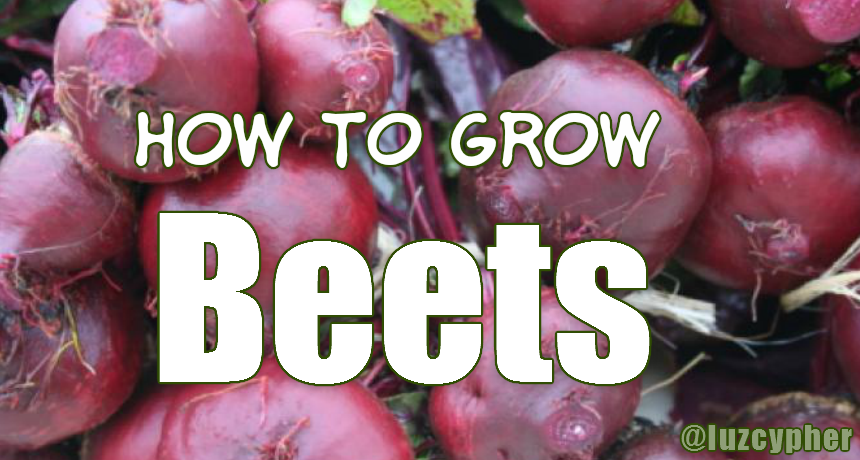
In this post, I'll show you every stage of the process, so you can harvest perfect beets every time.
Beets are an ancient, prehistoric food that grew naturally along coastlines in North Africa, Asia, and Europe. Originally, it was the beet greens that were consumed; the sweet red beet root that most people think of as a "beet" today wasn't cultivated until the era of ancient Rome.
By the 19th century, however, the natural sweetness of beets came to be appreciated and beets began to be used as a source of sugar (reportedly, Napoleon was responsible for declaring that beets be used as a primary source of sugar after the British restricted access to sugar cane). credit
I've met people who have only seen beets in a can and don't like them. They had never tried a fresh beet before but once they did they found they like beets. I don't like the canned ones at the store but I do like to pickle my own homegrown beets. But my favorite are fresh, raw beets.
Beets can be grown in containers of quality potting soil, but for best results grow them in well-prepared soil that has been raked to a fine tilth.
Beets need a sunny, open position and moist, fertile soil conditions. There are lots of types available. If you're a beginner, look out for bolt-resistant varieties which are less likely to produce flowering stems rather than the tasty roots in hot summers.
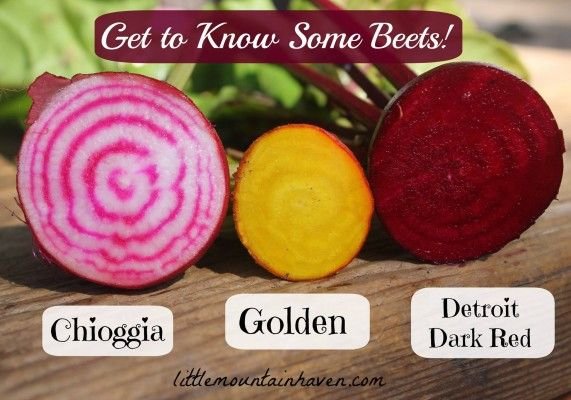
For the adventurous, there are many interesting colors. Varieties with concentric rings such as 'Chioggia' look particularly impressive in salads.
Sow seeds outdoors from mid-spring until the middle of summer. You can sow a couple of weeks earlier by using crop protection or a greenhouse, either by growing them in greenhouse borders or by sowing into trays or pots to plant out once temperatures outside have improved.
In areas with scorching summers, you'll want to avoid growing them in the hottest months, but you may be able to squeeze in a fall crop.
If you add a cloche, hoop house or row cover to your beets, you can extend the season and grow them longer due to the additional warmth.
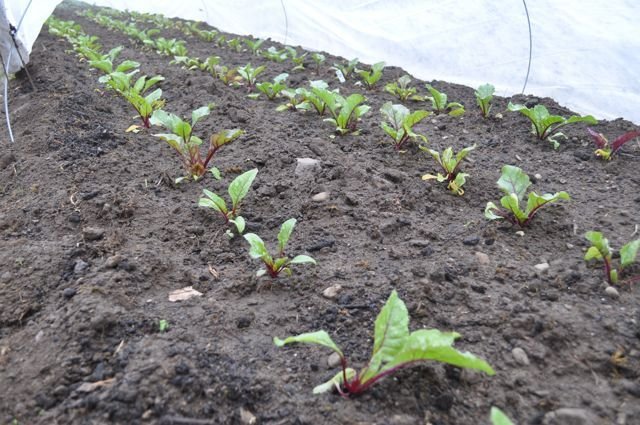
To sow, first mark out seed drills into prepared soil. You can use a long-handled tool to make depressions into raked soil like this, or for shorter rows simply use a hand trowel to create your drills.
These should be about an inch (2cm) deep, with subsequent rows spaced one foot (30cm) apart.
The seeds are quite big and knobbly which makes them very easy to sow. Unlike other crops, beet seeds are actually clumps of individual seeds so you'll often get several sprouts from each one.
Simply drop the seeds into the drill so that they are about 1 or 2 inches (2-5cm) apart. There's no need to be too precise with this, as you can always remove excess seedlings once they've germinated.
Now cover the seeds back over, patting the soil back down with the palm of your hand or the back of a rake. Don't forget to label your rows.
You can also sow seeds into trays of potting soil. Sow 2 or 3 seeds into each cell, then cover with potting soil, and water. Keep the potting soil moist as the seeds germinate and grow on into young seedlings.
Growing in trays allows plants to be set in place at their final spacing and is great for early crops started off undercover.
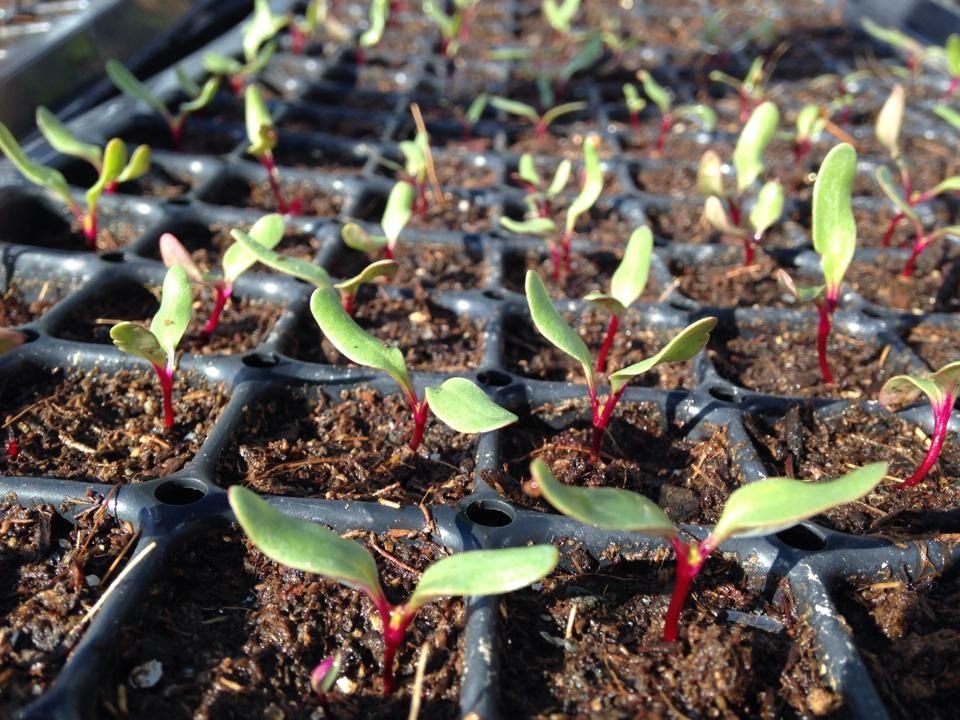
Tray-grown seedlings should be planted so that each cluster of seedlings is about 8-10 inches (20-25cm) apart in each direction. Don't worry about thinning the seedlings - the plants will naturally push themselves apart as they grow. Rows of seedlings however, should be thinned in stages until they are around 4 inches (10cm) apart within the row.
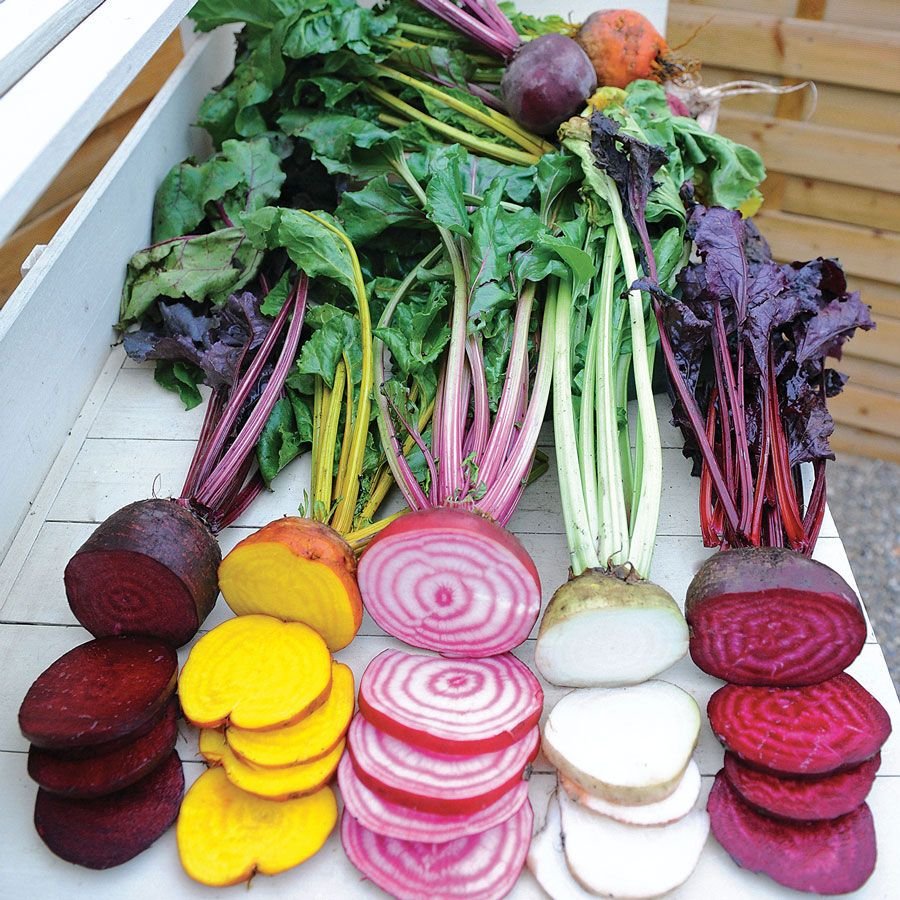
Keep plants watered in dry weather. As well as encouraging good, even growth, this reduces the risk of bolting - when the plants flower, rendering the crop useless.
Carefully remove weeds between plants by hand or by using a hoe. Beets can be harvested from about the size of a golf ball up to the size of a tennis ball. To harvest, gather the base of the stems and twist the root out of the soil.
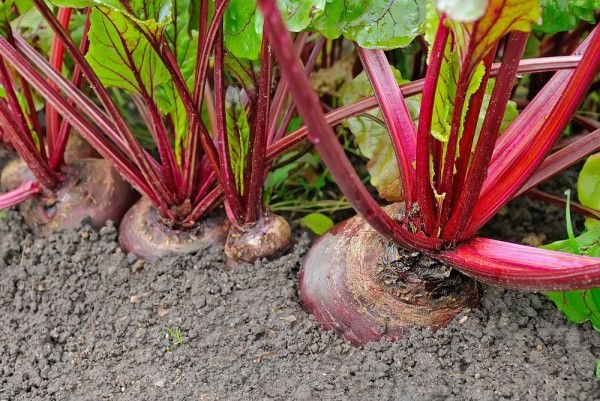
You can also use a fork to dig them out. Leaves can be twisted off and cooked in the same way as spinach, or just snip the leaves off into the compost heap. Our rabbits and goats love the beet leaves as do the chickens.
In areas with mild winters, roots sown later in the season can be left in the ground to dig up as required. Alternatively, store roots in boxes of sand in a cool but frost-free place.
Beets Are Healthy
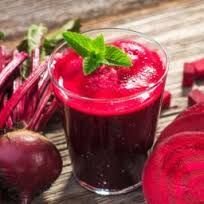
Although beets have the highest sugar content of all vegetables, most people can safely eat beet roots a few times a week (and their greens in unlimited quantities), enjoying not only their sweet, earthy flavor but also their powerhouse nutrients that may improve your health in the following ways.
1. Lower Your Blood Pressure
Drinking beet juice may help to lower blood pressure in a matter of hours. One study found that drinking one glass of beet juice lowered systolic blood pressure by an average of 4-5 points.3
The benefit likely comes from the naturally occurring nitrates in beets, which are converted into nitric oxide in your body. Nitric oxide, in turn, helps to relax and dilate your blood vessels, improving blood flow and lowering blood pressure.
2. Boost Your Stamina
If you need a boost to make it through your next workout, beet juice may again prove valuable. Those who drank beet juice prior to exercise were able to exercise for up to 16 percent longer.4 The benefit is thought to also be related to nitrates turning into nitric oxide, which may reduce the oxygen cost of low-intensity exercise as well as enhance tolerance to high-intensity exercise.
3. Fight Inflammation
Beets are a unique source of betaine, a nutrient that helps protects cells, proteins, and enzymes from environmental stress. It's also known to help fight inflammation, protect internal organs, improve vascular risk factors, enhance performance, and likely help prevent numerous chronic diseases.5 As reported by the World's Healthiest Foods:6
"[Betaine's]… presence in our diet has been associated with lower levels of several inflammatory markers, including C reactive protein, interleukin-6, and tumor necrosis factor alpha. As a group, the anti-inflammatory molecules found in beets may eventually be shown to provide cardiovascular benefits in large-scale human studies, as well as anti-inflammatory benefits for other body systems."
4. Anti-Cancer Properties
The powerful phytonutrients that give beets their deep crimson color may help to ward off cancer. Research has shown that beetroot extract reduced multi-organ tumor formations in various animal models when administered in drinking water, for instance, while beetroot extract is also being studied for use in treating human pancreatic, breast, and prostate cancers.7
5. Rich in Valuable Nutrients and Fiber
Beets are high in immune-boosting vitamin C, fiber, and essential minerals like potassium (essential for healthy nerve and muscle function) and manganese (which is good for your bones, liver, kidneys, and pancreas). Beets also contain the B vitamin folate, which helps reduce the risk of birth defects.
6. Detoxification Support
The betalin pigments in beets support your body's Phase 2 detoxification process, which is when broken down toxins are bound to other molecules so they can be excreted from your body. Traditionally, beets are valued for their support in detoxification and helping to purify your blood and your liver. credit
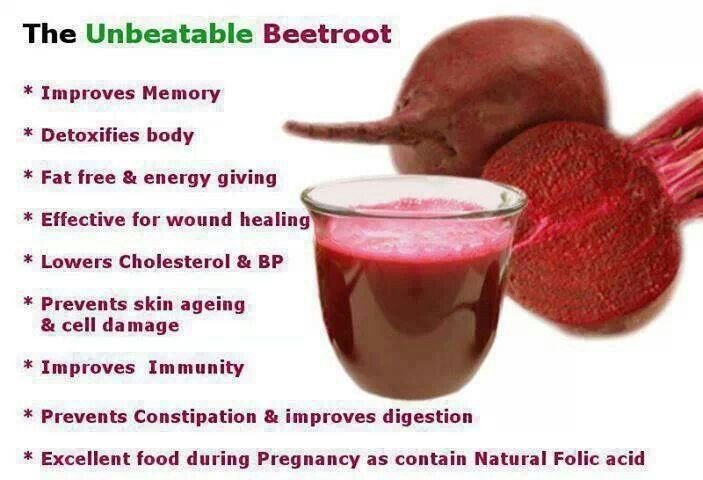
Enjoy your beets grated into salads, roast them in a little oil with herbs and rock salt, or if you're feeling adventurous why not make a warming borscht soup topped with a scattering of garden grown dill.
Beets really are wonderful - colorful, tasty and packed full of nutrients! If you've grown beets before, don't forget to share your own tips for growing them by popping us a comment below, and if you found this post helpful, well, I've got plenty more how-to posts like this in the pipeline so why not follow me?
Related Posts
How To Grow Strawberries --- by @luzcypher
How To Grow Lettuce For Your Home And Market --- by @luzcypher
How To Plant And Care For Artichokes In Your Garden --- by @luzcypher
How To Plant Potatoes For A Year Round Harvest --- by @luzcypher
The Magic Of Homemade Fertilizer Feeding Your Garden With Comfrey --- by @luzcypher
Benefits Of Garlic And How To Grow It In Your Garden --- by @luzcypher

